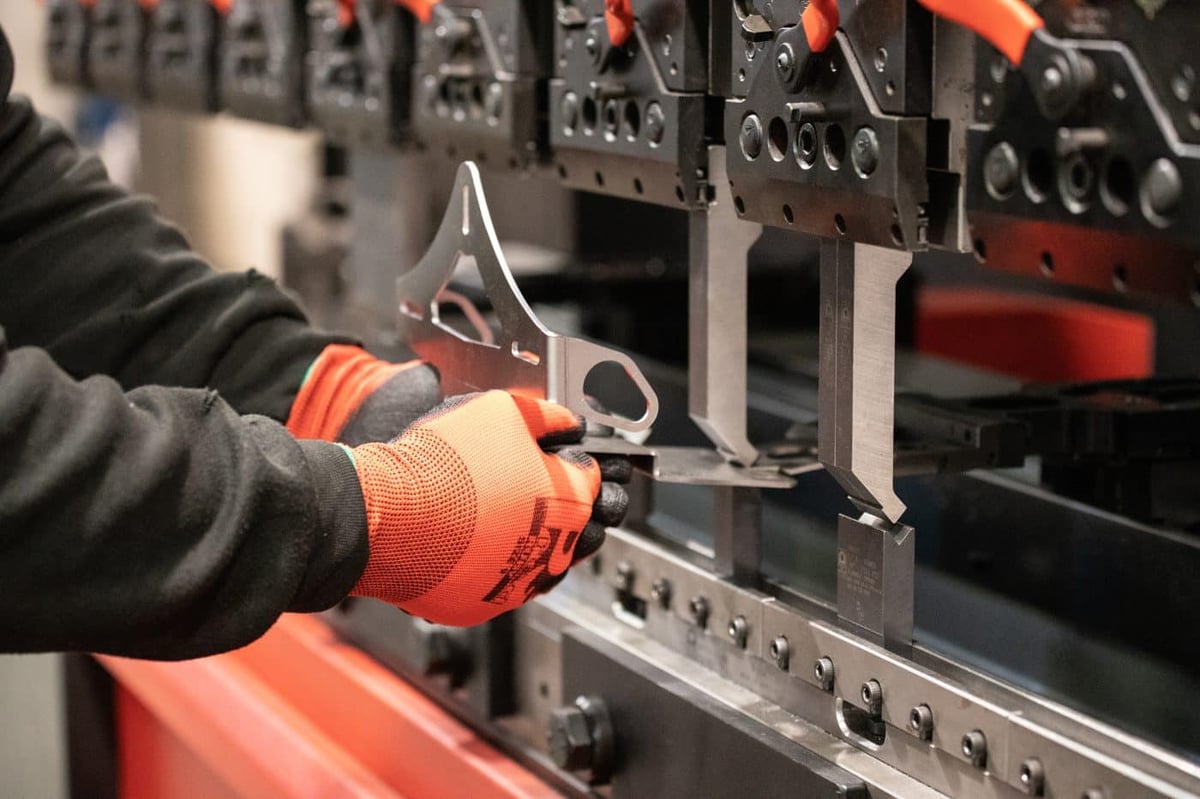¿Qué es una prensa plegadora CNC?
A Prensa plegadora CNC Es una máquina herramienta que se utiliza en la metalurgia para doblar y dar forma a láminas y placas de metal. Emplea una combinación de fuerza hidráulica o mecánica y tecnología de control numérico computarizado (CNC) para manipular con precisión las láminas de metal en las configuraciones deseadas. Las prensas plegadoras CNC se utilizan comúnmente en varias industrias, incluidas la fabricación, la construcción, la automoción y la aeroespacial, para producir componentes que van desde simples soportes hasta complejas piezas estructurales.

Principio de funcionamiento
Máquinas plegadoras CNC Las máquinas de doblado de precisión han transformado la industria metalúrgica con sus capacidades de doblado de precisión y tecnología avanzada. Comprender los principios de funcionamiento fundamentales de estas máquinas es esencial para optimizar su rendimiento y eficiencia. En este artículo, exploraremos el intrincado funcionamiento de las máquinas, centrándonos en aspectos clave como el sistema hidráulico, la estructura mecánica y el sistema de control.
Sistema hidráulico
El sistema hidráulico de una máquina CNC es el núcleo de su potencia de plegado. Consta de una bomba hidráulica, cilindros, válvulas y mangueras que trabajan en armonía para generar y controlar la presión hidráulica. Cuando se inicia una operación de plegado, la bomba hidráulica presuriza el fluido hidráulico, que luego se dirige a los cilindros hidráulicos. Estos cilindros se extienden o se retraen para ejercer fuerza sobre la herramienta de plegado, lo que permite un plegado preciso de las láminas de metal. Al ajustar la presión y el caudal del sistema hidráulico, los operadores pueden lograr plegados uniformes y precisos.
Estructura mecánica
La estructura mecánica de una prensa plegadora CNC proporciona el marco para sus operaciones de plegado. Por lo general, incluye un marco resistente, un ariete móvil (o viga superior) y una bancada fija (o viga inferior). Las herramientas de plegado, como punzones y matrices, se montan en el ariete y la bancada para dar forma a la chapa metálica durante el plegado. Además, las prensas plegadoras CNC pueden incluir topes traseros y sistemas de coronación para mejorar la precisión y la flexibilidad del plegado. Los componentes mecánicos funcionan juntos a la perfección para garantizar resultados de plegado precisos y repetibles.
Sistema de control
El sistema de control es el cerebro de la prensa plegadora CNC y regula su funcionamiento y funcionalidad. Las prensas plegadoras CNC modernas están equipadas con sistemas de control avanzados basados en tecnología de control numérico por computadora (CNC). Los operadores utilizan interfaces intuitivas o paneles de pantalla táctil para ingresar parámetros de plegado, como el ángulo de plegado, la longitud de plegado y el espesor del material. El sistema de control interpreta estas entradas y ordena al sistema hidráulico que ejecute la operación de plegado con precisión. Las funciones avanzadas, como la compensación automática de herramientas y la corrección del ángulo, optimizan aún más el proceso de plegado, lo que garantiza una calidad constante de las piezas y una eficiencia de producción.
Conclusión
En conclusión, las prensas plegadoras CNC se basan en una combinación de potencia hidráulica, precisión mecánica y control digital para lograr un plegado de metales preciso y eficiente. Al descifrar los principios de funcionamiento de estas máquinas, los operadores pueden aprovechar sus capacidades para producir piezas de alta calidad con consistencia y confiabilidad. Ya sea en la fabricación de automóviles, la industria aeroespacial o la fabricación general, las prensas plegadoras CNC son herramientas indispensables para las operaciones de metalurgia modernas.



